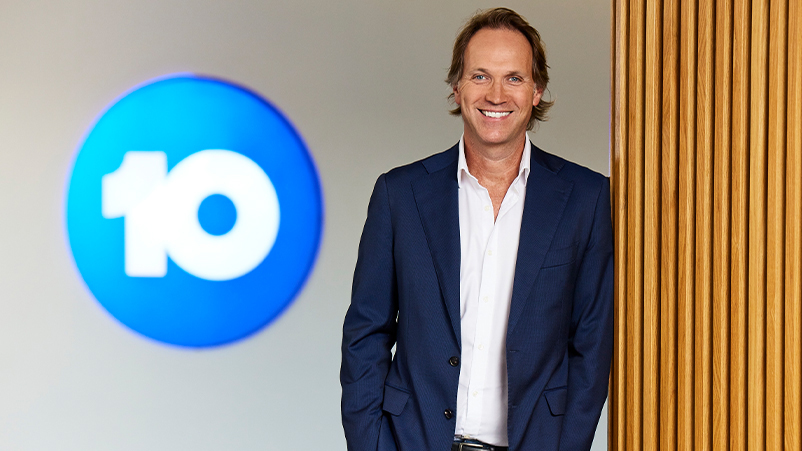It’s a mood thing: chase TV show ‘fans’ – they blitz ad attention and recall of ‘viewers’

It may not feature in a marketer’s conventional media planning ‘matrix’ but the evidence is compelling around real ‘fans’ of TV formats showing major increases versus ‘viewers’ for ad attention and recall. Fans deliberately interact with content outside of viewing hours and – well, simply – as fans, they’re in the right mood. 10 ViacomCBS’s Michael Stanford lays it all out.
The media matrix is not always right
Over recent years, advertisers have been getting a sense of what they have always known: not all eyeballs are the same. Research from the Marketing Scientist Group shows that viewers are not only different from each other, they view advertising differently based on their level of attention and attitude to the program. Again, none of this seems surprising. What remains confusing is how rarely it factors into media selection.
Media is often chosen with a range of attributes apportioned to channels that reflect a marketing objective. Often presented with the liberal use of the word ‘matrix’, this can get complicated and subjective, laced with assumptions, generalisations and loads of ticks and crosses.
Too often the ‘matrix’ does not align to the creative execution. You need only drive past a Metrolite and see a headline you can’t read or be hyper annoyed by a hyper targeted ad on Facebook to realise that what might fit neatly on a slide may not sit comfortably in the real world.
Most importantly, it rarely considers the mood of the viewer. Particularly the elevated mood of a fan - a viewer who is more invested in a storyline or character, more likely to share their thoughts and feelings, and more connected to others who share their passion.
Recall and purchase intent soars
Obviously, this is crucial for Programmers. 10 ViacomCBS has three of the top six fan-heavy shows in Australia, with Australian Survivor number one for the top percentage of fans.
But it’s equally important for brands.
In the Marketing Scientist Group research, fans claimed their viewing was more purposeful. Importantly for advertisers, fans have higher levels of attention for the ad break and higher ad recall compared to other viewers. According to this research, brand recall for fans was 22% higher and purchase intent increased by 14%.
This higher level of attention in the ads is supported by research by Dr. Duane Varan the CEO of MediaScience. He concluded that: “One of the most powerful impacts of context is positive ‘valance’. When a TV program puts you in a good mood, you also view ads more favourably.”
Brands can leverage this elevated attention by advertising within the show but also around the digital touchpoints where fans deepen their connection.
Active viewers want more
For programs like MasterChef Australia, The Bachelor Australia, Australian Survivor and The Project, 67% of total program audiences consumed digital touchpoints beyond full television episodes, with curated options responsive to the behaviour of fans. This clearly demonstrates the blast radius effect of active, not passive, viewing. And, this counters the argument by digital giants that our goldfish-like attention spans are solely looking for bite-size content. More accurately: once viewers enjoy the meal, they look to snack on more of what they love.
Accessing fans through relevant Integration takes effectiveness to another level, building top-of-mind awareness quickly and efficiently. Sometimes it can happen in just minutes, as was the case of the Hibachi grill in MasterChef, which enjoyed a dramatic sales spike that echoed the real time spike in search results.
According to the Marketing Scientist Group research, sponsorships within 10 ViacomCBS’s fan-heavy shows delivered an unprompted awareness gain of 12 points among light or lapsed category users — the key audience to growing brands. The research also showed that the impact of sponsorship was larger when a brand had lower baseline awareness.
There are potentially many reasons why this is the case. Popular formats provide a halo effect or cultural relevancy. Also worth considering is the tribal nature of cultural imprinting and how audiences respond more when they know others have seen a similar message.
Follow the science: Emotion + Attention = Impact
When brands struggle to gain their own fans, reaching show fans through brand integration, adjacent advertising or talent endorsement can tap into this valuable, attentive audience and deliver a sales impact like no other.
There are many unknowns in marketing, but we now know so much more than we ever did. Let’s use the science we now have, the research that demonstrates why brands must connect with people who lean in and are primed emotionally. People who are happy and relaxed, not distracted and annoyed.
Next time you are in a media channel matrix presentation think of the mood and mindset of an audience. You may be slumped in your seat, but think about those on the edge of theirs.
